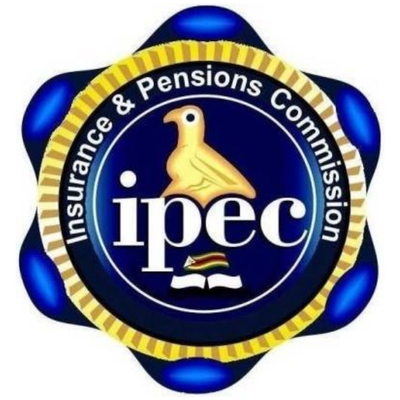Low investment in R & D stunting Sadc industrialisation
The Southern African Development Community (SADC) faces significant hurdles in achieving its industrialisation goals due to insufficient investment in research and development (R& D), according to the bloc’s secretariat.
Despite launching the SADC Industrialisation Strategy and Roadmap in 2015 with the aim of transforming economies and creating quality jobs, member states have struggled to make substantial progress. The plan was to increase manufactured exports to 50 percent of total exports by 2030.
Speaking at the SADC Industrialisation Week (SIW) and Investment Conference that in Harare, Reaboka Morakabi, the bloc’s secretariat programmes officer for Science, Technology and Innovation (STI), highlighted the critical role of R and D investment.
“The investments that we put in research and development — what is key here is also the amount of resources that the governments are giving to the institutions that are involved in Science, Technology and Innovation (STI) within the member States.
“This indicator is a problem because we have got clear feedback from the member States as to how much they fund from their national budgets to the institutions that are championing STI.
“We need to have that indicator so that we will be able to say STI can drive industrialisation because we have put in resources there, without the resources, then the industrialisation objective is just a talk show. We still need to improve as a region to meet the industrialisation objective,” he said.
Morakabi said a number of SADC countries have Public-Private Partnership (PPPs) initiatives, but such policies are not specific to STI.
“The PPPs established in STI are only available in DRC (Democratic Republic of Congo), Malawi, South Africa and Tanzania out of the 16 member States.
“The number of PPPs agreements on sharing private science, technology and innovation infrastructure, I have indicated to you from that national innovation system diagram that the universities, the governments and industry have to work together and strengthen those linkages. When we look at this since we got these reports from member States, it tells you that we (SADC) have very weak national innovation systems,” he said.
SADC comprises Zimbabwe, Zambia, Malawi, Mozambique, South Africa, Lesotho, Eswatini, Botswana, Namibia, Angola, Madagascar, Mauritius, Comoros, DRC, Seychelles, and Tanzania.
Morakabi said none of the countries have met the 1 percent threshold on Gross Domestic Expenditure to support research and development initiatives to drive the industrialisation agenda.
“Angola is supposed to meet the 1 percent of Gross Domestic Expenditure on research and development but that country was presently at 0,07 percent, Botswana (0,46 percent), DRC (0,43 percent), Eswatini (0,32 percent), Lesotho there is missing data, Madagascar (0,01 percent), Malawi (0,17 percent) while data is missing for Mauritius and Mozambique.
Namibia at 0,34 percent, Seychelles (0,4 percent) while South Africa was at 0,61 percent — and South Africa has gone down from 0,8 percent prior to the Covid-19 pandemic. We have Zambia and Tanzania at 0,36 percent and then the data is missing for Zimbabwe also,” he said.
On Intellectual Property Rights (IPRs), Morakabi said most of the SADC member States have the policies and institutions that provide IPR services and these vary country by country.
In terms of the number of patents issued in the last three years, for Angola they have a total of 276 applications but only issued 104 in the past three years, DRC a total of 230 applications were made but only issued 221, Eswatini issued 15 out of the 15 applications, Lesotho’s total applications were three then one was issued, Madagascar had 85 and they issued 67, Namibia 54 and they issued 14, Seychelles only provided total applications, but not the issued patent applications — South Africa 13 976 they issued 3 466, Tanzania 4 402 only issued 21, so it’s a course for concern.
In his presentation at the SIW that was officially opened by President Mnangagwa on Wednesday, SADC Secretariat executive secretary, Elias Makgosi, said for the region to achieve its aspirations, member States should develop policies and regulations that actually drive industrialisation agenda.
“A deliberate focus must be made on the creation of and support to market access for those businesses and universities pursuing and leading the industrialisation effort; real and meaningful access to matters is the oxygen that businesses need to survive and also to achieve scale, without it, they will suffocate and perish. A lot still remains to be done to promote SADC’s industrialisation agenda,” he said.
Commenting on SADC industrialisation after a plenary session yesterday, a partner at Baker Tilly Capital, Prichard Mhako said: “Once we are talking of industrialisation in southern Africa, we are not moving at the right pace — pre-Covid we were contributing two percent of the world’s manufacturing output and post-Covid, that percentage has shrunk to 1 percent.
“SADC with regards to innovation and entrepreneurship as well as start-ups has lagged so much behind due to lack of start-up Acts except South Africa that has the start-up Act.”
Also speaking during the SADC Industrialisation Week, Confederation of Zimbabwe Industries (CZI) ceo, Sekai Kuvarika, said the SADC governments should support and fund research and development for capacity buildings that equip local people with skills for emerging industries in line with the AU declaration.
“There is need for the creation of centres of excellence in science and technology that enables sound research for modern industrial processes and accelerated industrialisation,” Kuvarika said.-ebusinessweekly










